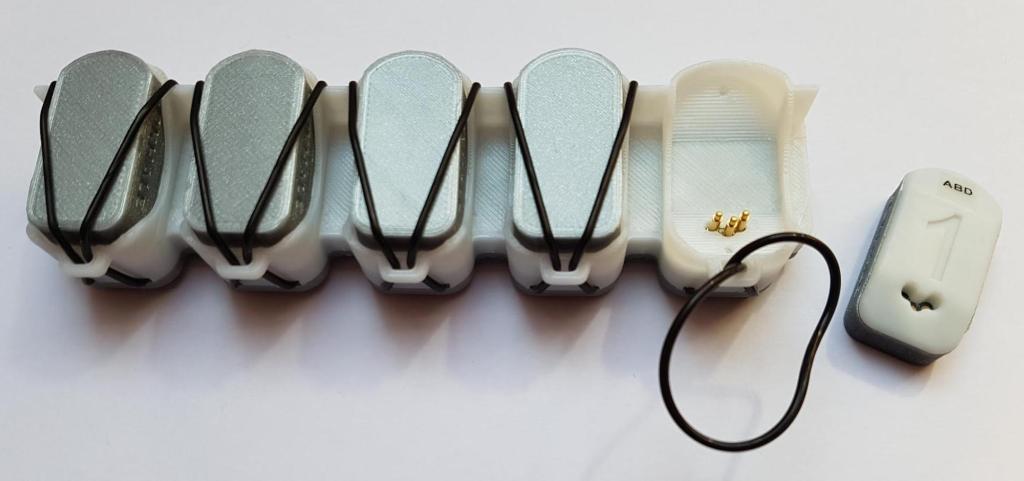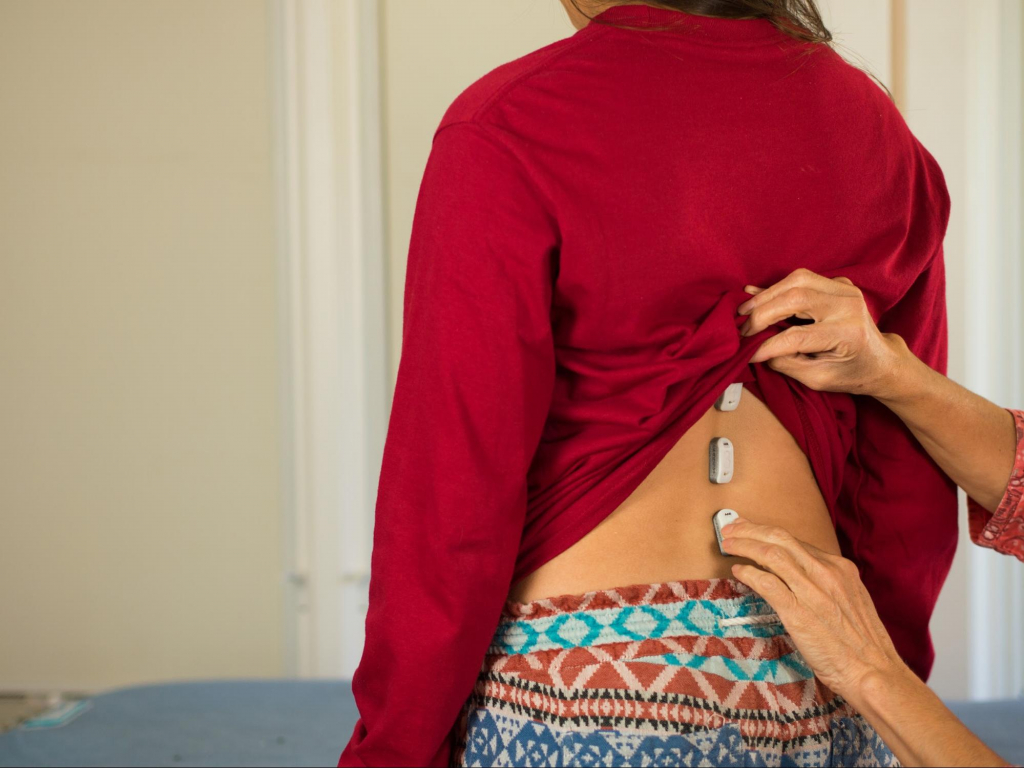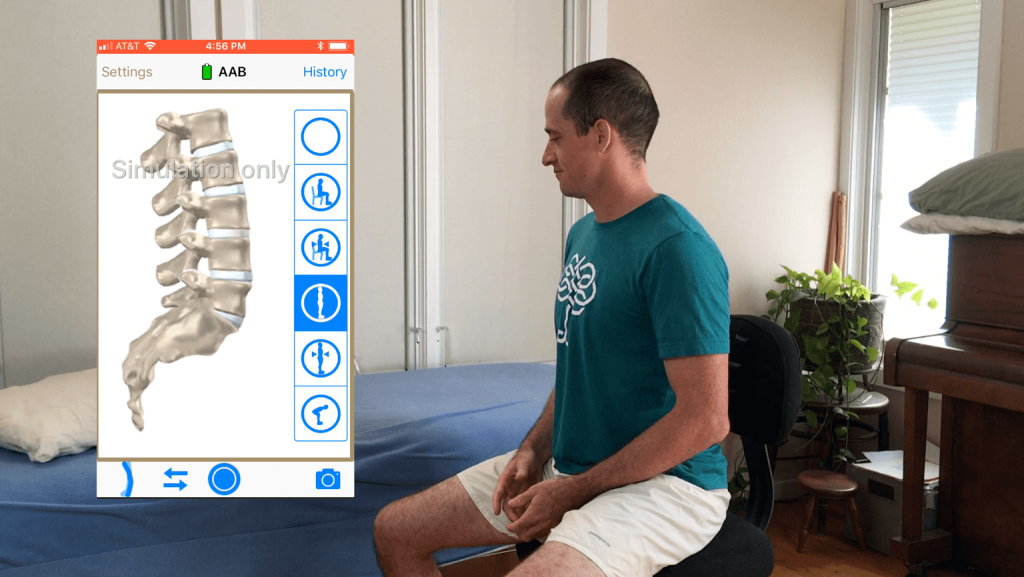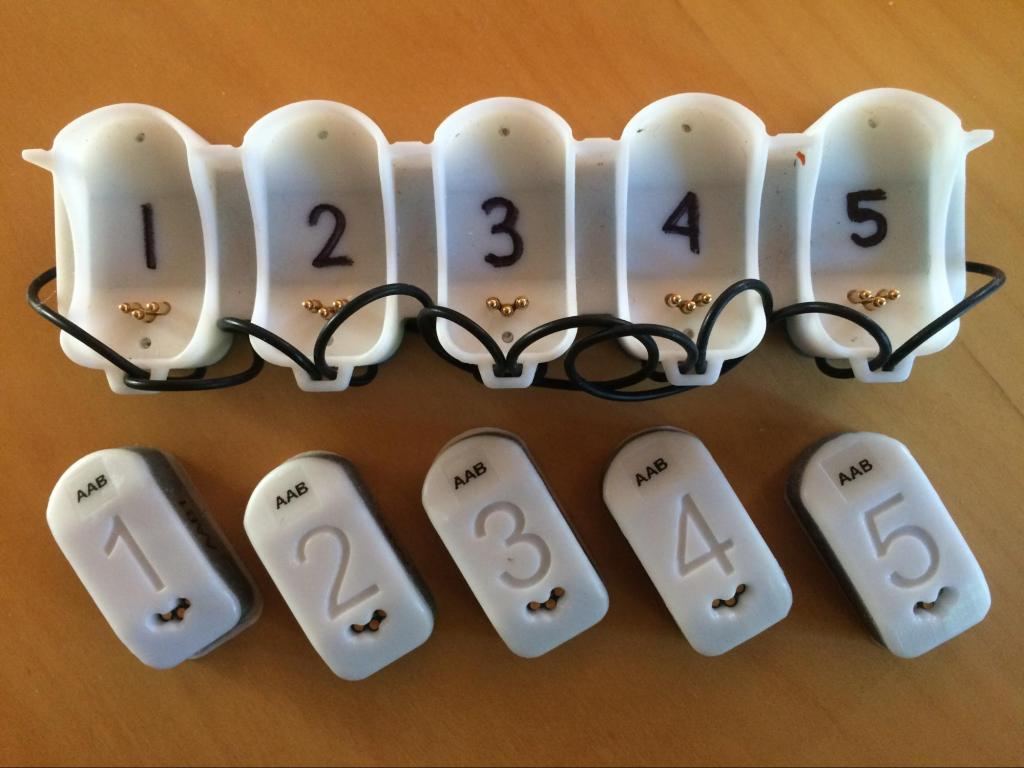Announcing SpineTracker™, the New Gokhale Method Wearable!

Our new and exciting SpineTracker wearable is available for use! Our participating teachers use this technology to help you:
Store baselines of the shape of your spine in sitting, standing, and bending
Understand the connection between your movements and changes in the shape of your spine
Establish a target shape for you to aim for in training your posture
Discover techniques, exercises, and activities to help you improve your target shape
Track your changes over time, using graphics and quantitative measurements of the curves in your lower back
Our test students love SpineTracker and have gotten great benefit from it—we’re now ready to share these benefits with all our students!

Laurie Moffatt: “Using the SpineTracker was fun, and a great addition to your class. It is even more exciting because it will measure changes in the spine shape and show improvement.”
What drove you to create this device?
Kinesthetic learning is difficult for most of our students. We learn more easily with our heads than with our bodies. Students often express this by saying things like, “Can I take you home with me?” after we’ve placed them in new and strange configurations. Though the logic of the posture shifts is compelling, and the new positions look perfectly acceptable (and even elegant) in a mirror, they feel very foreign at first (a slight bend at the hips can feel Neanderthal or ape-like!) and are therefore difficult to accept and return to. SpineTracker lets people practice the new postures repeatedly with visual confirmation of their position, until it no longer feels strange. Being able to see with their own eyes that their spine is upright although it feels leaning helps students accept the ideals.

What were some of the difficulties in creating this device?
I would not have undertaken such an adventure without the expert support of an inventor. I met Mark Leavitt at a Quantified Self conference where he expressed interest in creating a technological aid for Gokhale Method students. We explored many directions, such as a Smart Chair, and eventually settled on a device that would give a real-time read of the shape of a student's spine. We tried very hard to create a single flexible strip of sensors, but discovered that human skin, because it is so elastic, is extremely challenging to stick a long strip of electronics to. Also, the inaccuracies and climate sensitivities in the flex sensor readings undermined our efforts to create a precision instrument. We had much better results after switching to separated pods that stuck to the spine—each sensor has its own BLE (Bluetooth Low Energy) module, battery, PCB board, and antenna, so the device is really a five-sensor device. What we gained from this is an incredibly accurate rendering of the shape of the wearer’s midline groove over the spine. Since there isn’t much muscle or fat on that part of the body (even on muscular or obese people), this approximates the shape of the vertebral column very well. It’s almost like having a mobile MRI unit!
Carol Toppel: "I found the SpineTracker very helpful to visually see how my posture needed correction. It was easy to see how much correction I needed, and when I reverted back to my usual stance."

How has SpienTracker been useful so far?
Seeing one’s baseline shape. Students see the shape of their back, often realizing for the first time the contours that are with them daily. This is extremely useful information for someone who wants to improve his or her shape. Our teachers help capture baseline shapes on the student’s Gokhale Method account so future efforts can be compared against this baseline.
Understanding tricky posture concepts. Some of what the Gokhale Method teaches is difficult to grasp, and even counterintuitive. For example, most people have been taught to stick out their chests via commands like “sit up straight” and “stand up straight,” so when we teach tucking the ribcage to eliminate a sway in the low back, this feels like the opposite of good posture. The SpineTracker app, especially the spine view, makes a compelling case for why this technique is crucial for good posture.

Ideals set by the teacher allow the student to practice good posture over and over. It’s hard for students to know where they are in space once they’ve departed from their habitual posture. With the visual provided by the app, students can practice returning to exactly the right position, and continue to “recalibrate” their own sense of what is right. It can help overcome frequent comments and questions such as “Is this right,” “Am I doing the same thing you showed me,” and “I have no idea how I'll get back to this position if I move.”
Quantifying subjective data. Gokhale Method teachers frequently talk about sways and tucks, but SpineTracker records hard data on the angle between every pair of sensors on your spine. This is useful for knowing how you stack up (pun intended). In fact, we hope our data will find its way into medical literature over time.
Tracking progress over time. Since all ideals as well as snapshots along the way are stored in a student’s account, it allows students to track their progress over time. It is very difficult, if not impossible, for a student and their teacher to remember how exactly the student's back was months or years ago. SpineTracker keeps a tab on this in the student's account. This feature has already created lots of aha moments for our many test students.

Comparisons across positions. The spine changes shape as we go from sitting to standing to bending. Some of the changes are normal and healthy; others indicated tight muscles, rigid joints, or other unhealthy situations. Within every student’s account it is easy to select several spine snaps for comparison, and identify patterns or problem areas that are more challenging for teachers to spot, such as swaying only during the act of standing up or sitting down.
How does SpienTracker differ from other posture training electronics for consumers?
Healthy versus unhealthy targets / ideals. The ideals used in other posture training devices are set by the user. Since conventional wisdom about posture is misguided, the result is people training themselves to “sit up straight” and “stand up straight” with tense, counterproductive posture. With SpineTracker, the targets / ideals are set by a qualified Gokhale Method teacher—they help students grow beyond their mistaken or incomplete view of what constitutes healthy posture.

A package that includes education and training. SpineTracker comes with education and training. It is currently only available for students working with a Gokhale Method teacher, and is specifically designed to complement our teachings.
Positive versus negative feedback. SpineTracker use comes with a supportive, encouraging teacher, delighted by every bit of progress you make. The consumer devices on the market beep and buzz at you, often in frustrating, unproductive ways.
Accuracy. Other products on the market cannot differentiate between you stooping and you leaning forward in a healthy position, such as resting on your elbows. With SpineTracker, what you see is what you have. There are no false positives and you never get inaccurate feedback.
No hassle. All the hassles associated with charging units, applying sticky tape, removing sticky tape, positioning accurately, losing parts, returns, and more are managed by your friendly, hard-working teacher. You simply benefit from the technology and allow your teacher and our company to take care of the technology.
Barbara Olinger: "I wasn't sure what to expect with the SpineTracker, not even sure what it meant. However, I found it to be most helpful as I could view my posture as I moved. It was motivating and encouraging to see how I could correct my posture by looking at the app as I moved."
How can students have a chance to use SpineTracker?
Private lessons with participating teachers, all lessons with founder Esther Gokhale, and corporate offerings are the primary ways to be able to use SpineTracker yourself. Visit our SpineTracker page for complete information on our wearable, including a full list of participating teachers.


Comments
Add New Comment
Login to add commment
Login